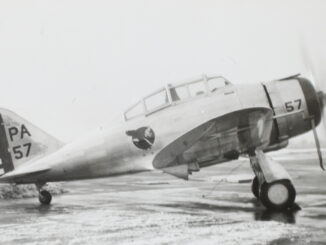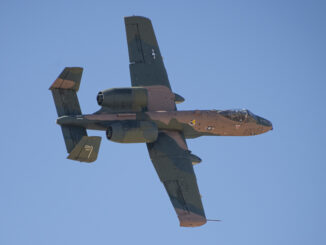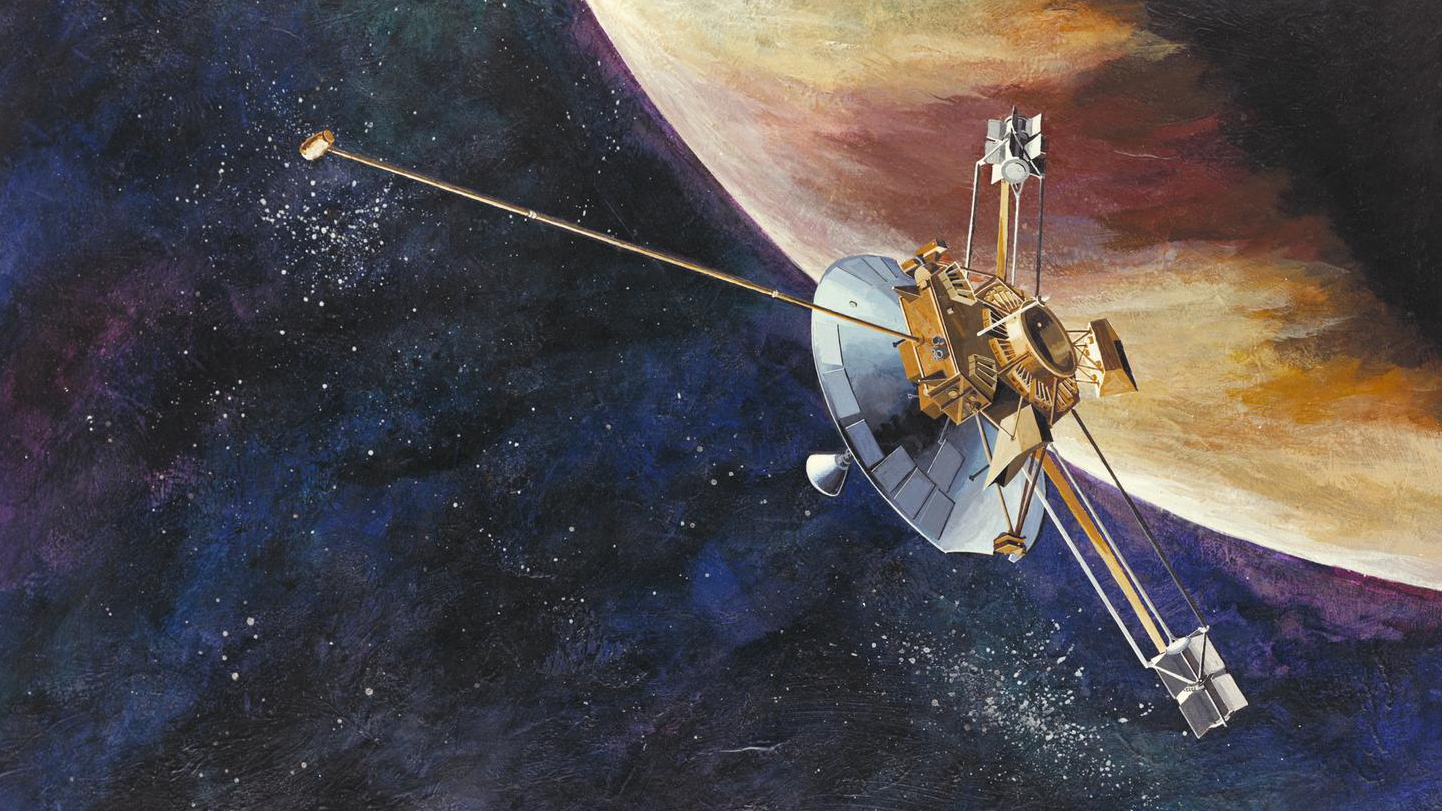 In about half a year, the Pioneer 10 space probe will reach another milestone in its journey into space – the distance of 21 billion kilometres (13.048 billion miles/ 140.376 Astronomical Units) from Earth.
In about half a year, the Pioneer 10 space probe will reach another milestone in its journey into space – the distance of 21 billion kilometres (13.048 billion miles/ 140.376 Astronomical Units) from Earth.
Pioneer 10, originally designated Pioneer F, was launched on 2 March 1972. It was the NASA’s first spacecraft to be sent on a mission to the outer planets.
Initially, the probe was designed to operate for twenty-one months, the time required to reach Jupiter. This goal was achieved in November of 1973. The first image of the largest planet in the Solar System was taken on 6 November, and twenty days later the spacecraft entered Jupiter’s magnetosphere.
On 4 December 1973, Pioneer 10 made its closest approach to Jupiter, passing at a distance of 130,354 kilometres (81,000 miles). Then, the probe passed several of Jupiter’s moons and continued its journey into interstellar space.
It soon became clear that most of the onboard instruments were still functioning and could transmit data for more than two decades. Despite of that, routine contact with the probe was terminated on 31 March 1997 due to budgetary constraints. However, Pioneer 10 continued to send signals to Earth for almost six more years, until 23 January 2003.
The Pioneer 10 mission was a major milestone in space exploration. The probe was the first spacecraft to fly beyond Mars, traverse the main asteroid belt, fly past Jupiter, and cross the orbits of Saturn and Neptune. Pioneer 10 was also the first human-made object to leave Earth on a trajectory that allowed it to escape the Solar System, making it the first spacecraft to travel beyond Neptune.
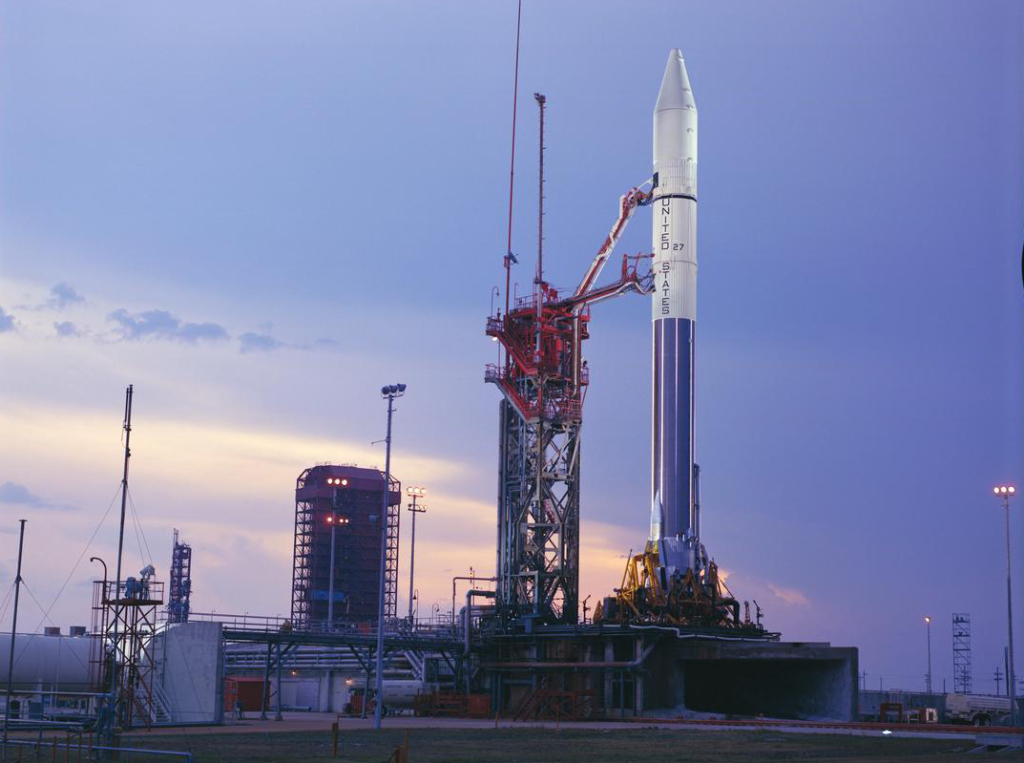
Moreover, Pioneer 10 was the first spacecraft to use entirely nuclear electrical power – two SNAP-19 radioisotope thermoelectric generators capable of producing about 140 W.
As Pioneer 10 continued its journey beyond the Solar System, it became the most distant human-made object in space. This record was broken on 17 February 1998, when it was overtaken in distance by Voyager 1.
Assuming the probe is neither retrieved nor collides with any object, it will continue to wander eternally through the Milky Way. Although silent, Pioneer 10 is still heading towards Aldebaran, the eye of the Taurus constellation. It is expected to pass by Aldebaran in about two million years.
Pioneer G, later known as Pioneer 11, a sister spacecraft to Pioneer 10, was launched on 6 April 1973. It was sent on a mission to Saturn and reached the planet in August 1979. On 1 September, the spacecraft made its closest approach to Saturn at a distance of 20,900 kilometres (13,000 miles). It then took several images of Saturn’s moon Titan.
Like its predecessor, Pioneer 11 continued its journey beyond the Solar System and remained active for many years. In September 1995, when NASA made its final contact with the probe, the last two instruments onboard were still operational. At the end of the following month, Pioneer 11 transmitted its final data package and then the contact was permanently lost.
Pioneer 11 is now heading towards the constellation of Aquila, near Sagittarius. If undisturbed, the probe is expected to reach that region in about four million years.
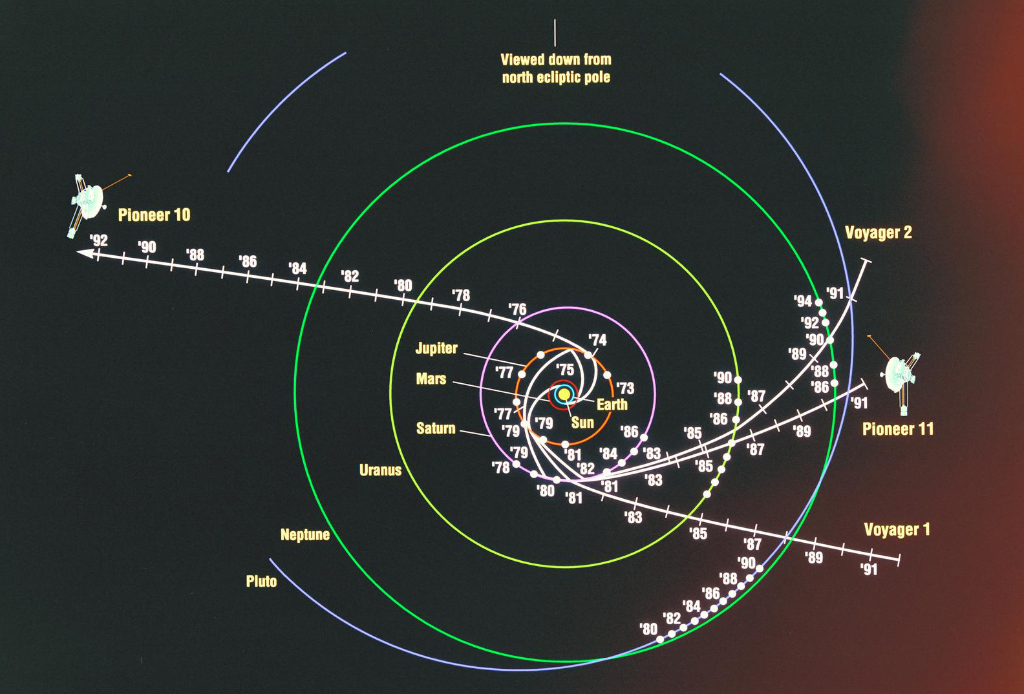
Currently, Voyager 1 and Voyager 2 are the most distant human-made objects in space, travelling at distances of 25.340 and 21.174 billion kilometres from Earth, respectively. Pioneer 10 is near the milestone of 21 billion kilometres, and Pioneer 11 is currently 17.402 billion kilometres away.
However, in the future both Pioneers are expected to be overtaken by the New Horizons probe, launched in 2006 and currently being the third fastest human-made object in space. Although New Horizons has no chance of catching up with the Voyagers, it is projected to surpass Pioneer 10 in 2143 and Pioneer 11 in 2314.
An interesting fact is that Voyager 1 and Pioneer 10 are the most distant human-made objects from each other, as the probes are travelling through space on opposite sides of the Solar System.
Most readers have probably heard about the so-called Golden Record – a gold-plated audio-visual disc containing a selection of sounds and images representing life on Earth. Carried aboard both Voyager probes, the Golden Record is intended for any intelligent extraterrestrial life forms, serving as an invitation to make contact with humankind.
Less well known is the fact that the Voyagers were not the first to carry a message for alien civilisations. Small aluminium plaques, showing their place of origin, launch date and basic information about humans, as well as the location of the Solar System, were also placed aboard Pioneer 10 and Pioneer 11.
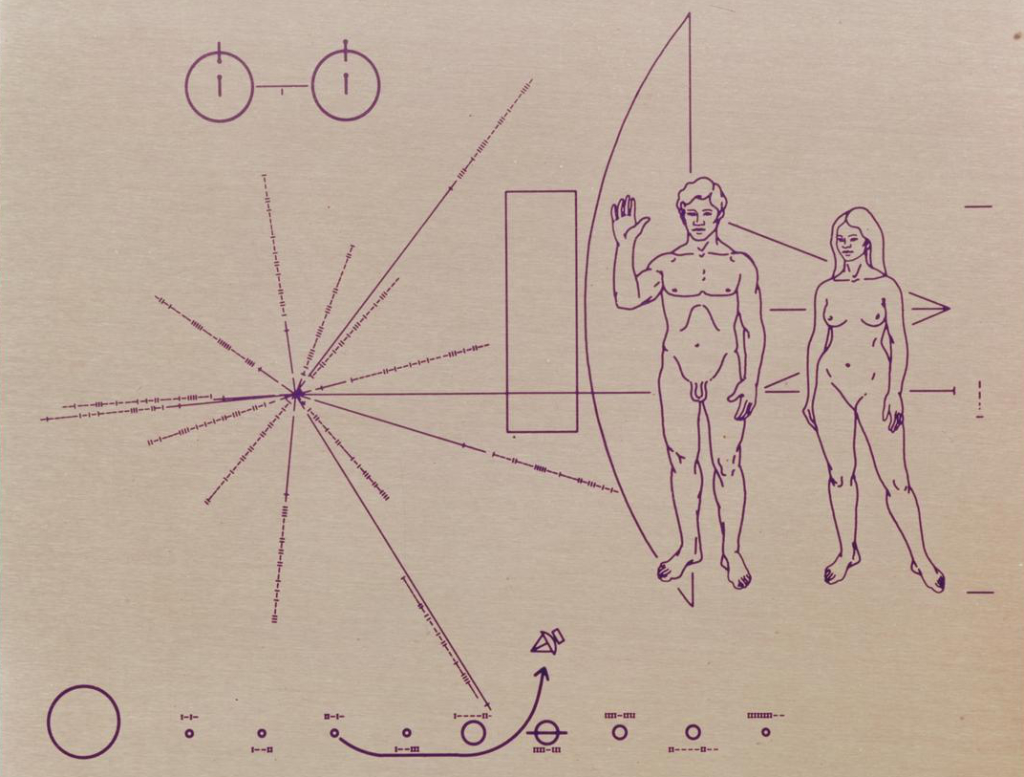
Cover photo: Pioneer F spacecraft in orbit around Jupiter, artwork by Rick Guidice (NASA, ARC-1972-AC72-1281)
All photos © National Aeronautics and Space Administration. Information from NASA Pioneer and Voyager programme websites were used.

